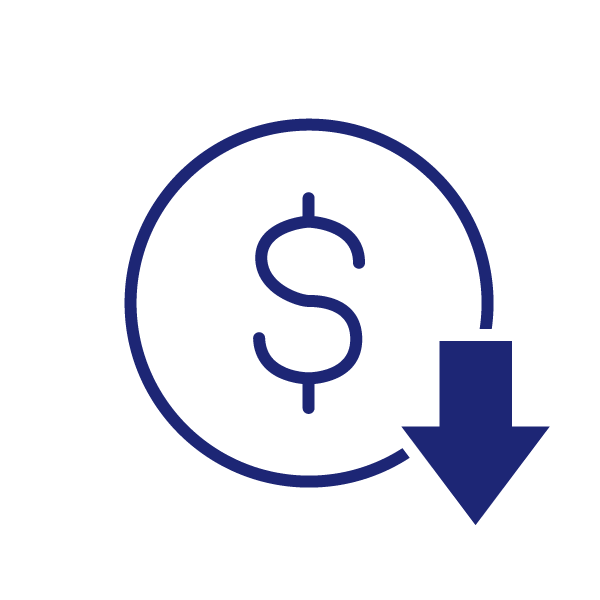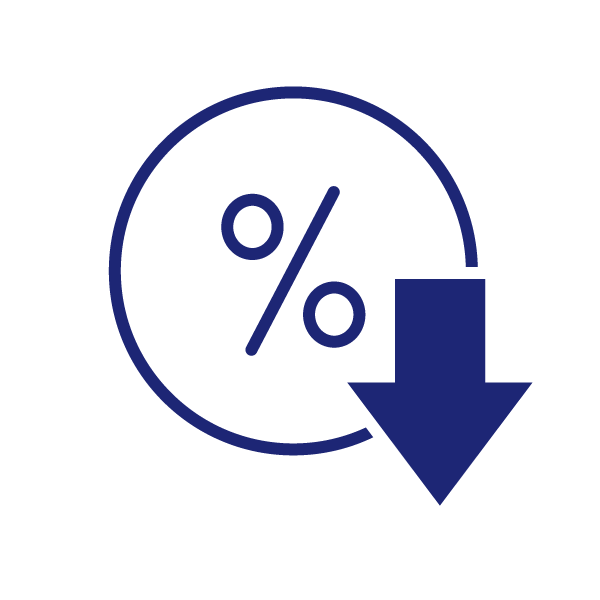For some homeowners, being tied to a mortgage for decades can feel like a financial burden, and you may be the type to want to speed up that timetable. If this sounds familiar, there is good news for you! There are strategies available to help you pay off your mortgage faster and become mortgage-free as soon as possible.
One such strategy is to leverage the lump sum payment option, which is available on many mortgages. With this option, you can make a lump sum payment toward your mortgage principal outside of your regular payments. At MCAP, for example, you can pay up to 20% of the original amount you borrowed per year without paying a prepayment charge. For example, if your original mortgage principal amount was $500,000, you can make a lump sum payment of up to $100,000 every year.
Benefits of Lump Sum Payments
There are several advantages that come with making lump sum payments against the principal of your mortgage.
 |
Reduced interest costs: When you make an extra payment, it directly reduces the outstanding principal balance. As a result, the interest charged on the remaining balance also decreases. |
 |
Shorter amortization: Not only does this extra payment reduce your interest, but it also speeds up your path to becoming mortgage-free. Because each payment goes directly to your principal, your overall amortization is reduced. |
 |
Increased equity in your home: Should you need extra funds in the future, your lump sum payments would have built up the equity in your home – this is equity that you may be able to access to finance important goals or events. |
Strategies for Making Lump Sum Payments
Making lump sum payments makes great financial sense, right? However, you may not have a lump sum to contribute right now. Here are some strategies to consider:
- Find opportunities to allocate money: Evaluate your financial situation to identify ways to save or otherwise direct money to lump sum payments. For instance, do you receive an annual bonus or tax return?
- Set up automatic transfers to a savings account: If you can set aside smaller amounts on a regular basis, consider setting up regular transfers to an account dedicated to lump sum payments. Then once a year, you can use the funds saved for this purpose. You can easily set up these smaller and ongoing payments through MyMCAP by calculating a paydown scenario. This online function enables you to make extra payments with very little effort.
- Establish achievable goals: If you can’t make lump sum payments every year but paying down your mortgage sooner is important to you, determine what is realistic for you. Can you make lump sum payments every other year, as an example? By using the Lump Sum Privilege Payment Calculator within MyMCAP, you can select the best scenario of your choice, and easily plan your payment schedule.
- Monitor your mortgage balance and track the impact: A powerful motivator to making lump sum payments is to see the difference they make to your mortgage balance, interest costs and amortization. By staying connected with your mortgage and seeing the impact, you may be motivated to prioritize this payment!
Lump Sum Payments in Action – See the Impact on a Mortgage
To help illustrate the impact of lump sum payments on a mortgage, we have created three fictional scenarios. Let’s take a look at the homeownership journeys of “Jamie,” “Ida and Alan” and “Ryan,” and how making lump sum payments can affect the cost and timeline of having a mortgage.
Case Study #1: Jamie
“Jamie” is a 45-year-old homeowner living in British Columbia. Her opening mortgage balance was $750,000. Today, her balance is $547,385.50 at an interest rate of 6.1%. Jamie makes monthly mortgage payments of $3,724.60. Her projected amortization is 22 years and 3 months.
Jamie earns a steady income but she didn’t have making lump sum payments on her mind. The great news for Jamie, however, is that she was the lucky winner of the MyHome Sweepstakes Grand Prize of a $4,000 payment against the principal of her mortgage!
With this $4,000 lump sum payment, Jamie’s mortgage is projected to be paid off 4 months faster, saving her $579.07 in interest.

Jamie’s Lump Sum Payment Calculation
Case Study #2: Ida and Alan
“Ida” and “Alan” are homeowners in their early 50s who jointly own a townhouse in Ontario. The starting balance on their mortgage was $350,000, and today, their balance is $228,777.51. Their interest rate is 4.09% and their weekly mortgage payment is $556.73. Their projected amortization is 9 years and 6 months.
Ida and Alan are eager to be mortgage-free as soon as possible. In fact, they plan to treat themselves to a trip to Europe after they make their final mortgage payment and free up their cash flow.
They earned a combined $40,000 year-end bonus, and the couple wants to make the most of this extra money – they wonder: Is it better to make a one-time lump sum payment of $40,000 to their mortgage balance, or make ongoing extra payments of $1,000 over their next 40 weekly payments?
The calculations below demonstrate that making a one-time lump sum payment would help Ida and Alan pay their mortgage off nearly 1 year and 11 months sooner. They’ll also save $6,558.37 in interest, compared to $5,858.75 if they make ongoing payments. With that extra $699.62, they can update their appliances, get away for the weekend, or contribute that amount to their dream Europe trip, which will happen nearly two years sooner!

|

|
Ida and Alan’s Lump Sum Payment Comparison
Case Study #3: Ryan
“Ryan” is a 35-year-old homeowner in Quebec. The starting balance on his mortgage was $750,000 and today, his balance is $546,964.88. His interest rate is 5.95%, and his bi-weekly mortgage payment is $1,693.39. His projected amortization is 22 years and 3 months.
Ryan has an extra $14,000 in savings, which he will put towards his principal as a lump sum over the next six months. However, he wonders if he should pay the full amount against his mortgage now or allocate the payment over time.
Upon using MCAP’s Lump Sum Privilege Payment Calculator, Ryan discovers that making a one-time lump sum payment saves more in interest compared to paying the same amount over time.

|

|
Ryan’s Lump Sum Payment Comparison
While these scenarios are only examples, they demonstrate that throughout the homeownership journey, leveraging the lump sum payment option is a powerful way to become mortgage-free faster and achieve financial independence sooner.
Want to be mortgage-free faster? Take a look at the Lump Sum Privilege Payment Calculator within MyMCAP to run different scenarios according to your personal financial situation. Select the “Calculate a Pay Down Scenario” button on the MyMCAP Homepage, select your values and calculate the details. It’s an easy way to see how lump sum payments can have a meaningful impact on your mortgage and long-term finances.




